Enjoying flowers does not require knowing the first thing about them. The attraction of a flower is natural; seductive to people, much as to butterflies and bees, by a magical combination of hue, symmetry and fragrance. But the more time spent in the presence of flowers, especially those in the wild, the more questions arise. Learning about wildflowers and their infinite variations of means to the same end is fascinating.
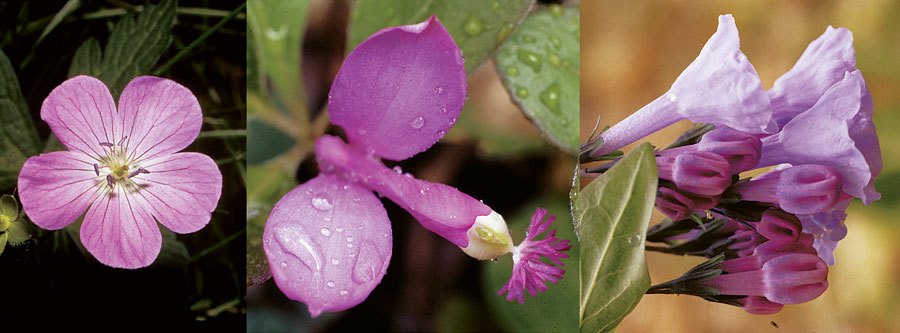
Flowers and photographers go together well. The subject captivates the photographer's eye for art and beauty and arouses the love of being in the field. Wildflowers, because of their diminutive size, often concealed situations, and colors that yearn for superlative reproduction, challenge the photographer's skills. Distinguished photos of wildflowers are the result of optimum settings for depth of field, choice of lens, film and other hardware. And successful wildflower photographers have to know when and where to find ready subjects. Good results take us ever closer, and flowers become larger than life, intoxicating in their elegance and complexity. Or we simply become smaller, and may begin to consider flowers as does a bee.

Yet, photographs- and the larger contingent of books, TV, and computers- for all their indispensable contributions to our lives as educational tools, have sent a subtle message that what is most astonishing and beautiful lies far from home. Our wealth of media, and the ease of a virtual trip around the world and beyond, invites complete reliance for our experience, and we walk outside our doors with eyes closed. Of course, there's nothing like the real thing. No websites (yet) have figured out how to download a flower's fragrance .
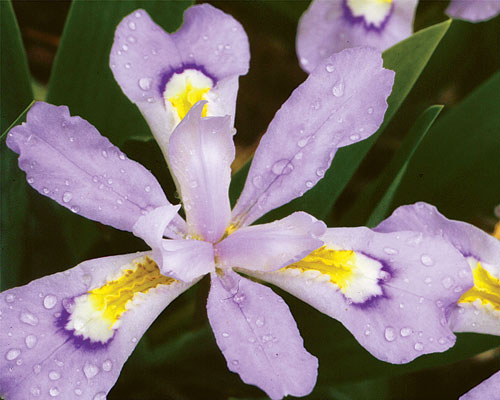
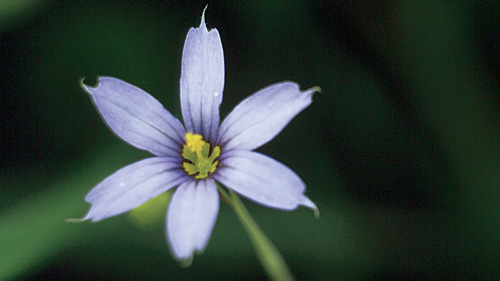
Lifetimes are spent learning about wildflowers, and there are vast levels of appreciation for the systems in which they live. The "fresh" liberating smell on a walk through the forest in early spring is, for a biologist, the odor of gases emitted by billions of tiny organisms in the newly thawed earth, releasing nutrients vital to the approaching bloom of wildflowers. A professional botanist observes the forest, meadow or swamp as an integrated community of organisms. The presence of various kinds of plants suggest what kind of rock is beneath the soil, how deep the dirt is and how easily water seeps through it. For the nature lover, a growing knowledge of natural systems, their delicacy and complexity, means appreciating their vulnerability to actions well beyond their immediate vicinity.
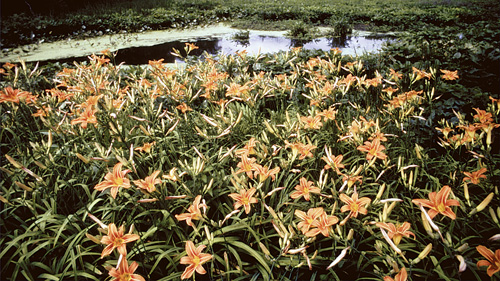
Flowers existing in the wild are highly refined organisms, supremely evolved and adapted to their environs. Because there is a wide variety of ecological systems in Northwestern New Jersey- hills, river valleys, swamps, meadows- the Skylands is a fabulous natural arboretum for finding wildflowers. Subjects shown in these pictures were photographed in the highlands of Stokes Forest in northwest Sussex County; the rich woods and gentle meadows of Jenny Jump State Forest further south in Warren County; the rocky ledges of Mahlon Dickerson Reservation in Jefferson; along trails in the Tourne Park which straddles the Morris County communities of Mountain Lakes, Denville and Boonton Township; and in the teeming muck of the Great Swamp Wildlife Refuge, bordering Morris and Somerset counties. Variety of species has been enhanced by intense human interaction that has brought numerous non-native species which have become successful in second growth forests or fields that have been plowed or turned over. Sometimes you'll find a big surprise in a vacant lot or in a gully along the road.
When hunting wild herbs, its important to understand that "spring" moves around. The six weeks or so of greening takes place at different times in different places, so that if you miss the first show there's another one coming soon nearby. Depending on elevation and access to sun, spring can start as early as February and as late as May.
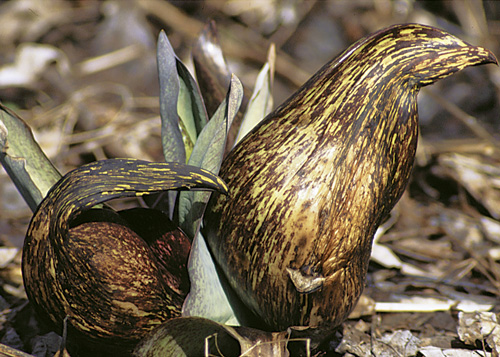
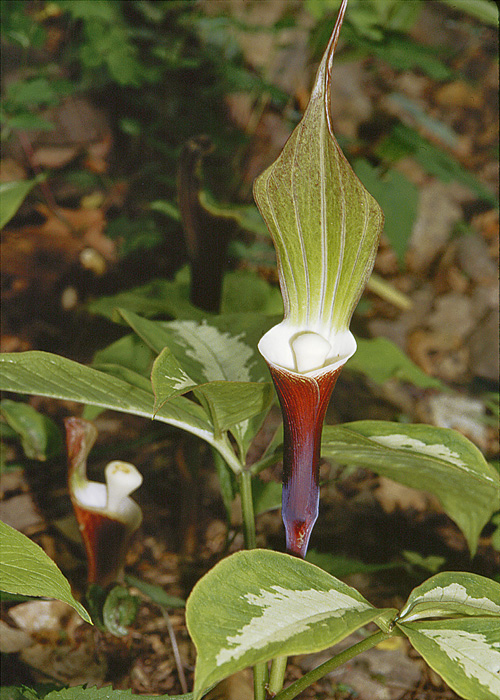
Flowers generally bloom first in the forest where leafless trees allow the sun to the ground while breaking the wind chill. Tree trunks radiate the day's heat to the ground to protect bursting seeds from frost. Each flower has its own way of doing business. The first to pop above the layer of wet, dead leaves is always skunk cabbage, able to spontaneously generate enough heat to propel it through the frozen ground. Above ground, the plant emits a stink that mimics that of a freshly thawed carcass. The flies that respond will pollinate the hosts a full month before the sweet fragrances of other species bring on the butterflies and bees.
Smaller plants that need only shallow soil follow, doing their work quickly before the leaves above emerge to conceal their daily dose of sunlight. Hepatica, coltsfoot, trailing arbutus and others are prepared for the inevitable cold surprises that come in March and early April. Tiny hairs, like the down on a baby chick, cover their stems, not to hold heat in but to keep ice crystals from forming. Soon joined by neighbors like dutchman's breeches, trout lily, saxifrage- and dandelion, which will gain an early advantage beyond the forest in the wilderness of suburban lawns- the procession is off once again, never diminished in its capacity to astound, inspire, and invigorate. If you were there last year, there's always more to see. Don't dare miss it.
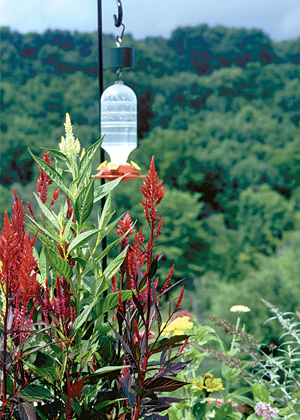
Wildflowers planted in our home gardens make good company for the more domestic daffodils and tulips that color our yards so exquisitely. Wildflowers can also entice both ruby-throated hummingbirds and many species of butterflies to add even more color and excitement to your Spring. Red blossoms are best if you want to encourage the hummingbirds to spend the summer. Trumpet creeper, bee balm, wild bergamot and cardinal flower are some of their favorites. Remember, that when beginning a home wildflower garden, plant a variety of annuals (for blossoms right away) and perennials (which usually take at least a year to blossom). For variety, an herb garden can supply seasonal color and provided tasty flowers for your table.
Photo: Donna Traylor